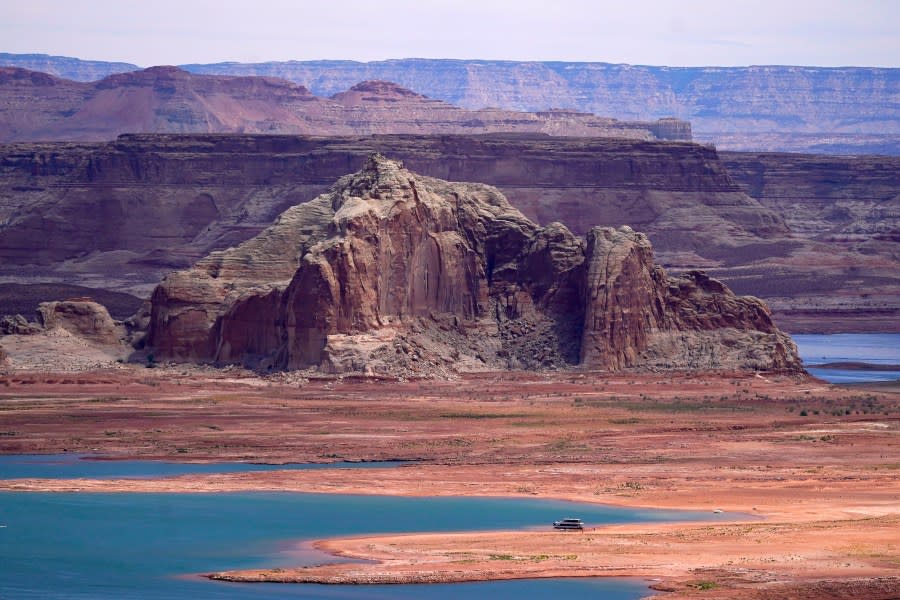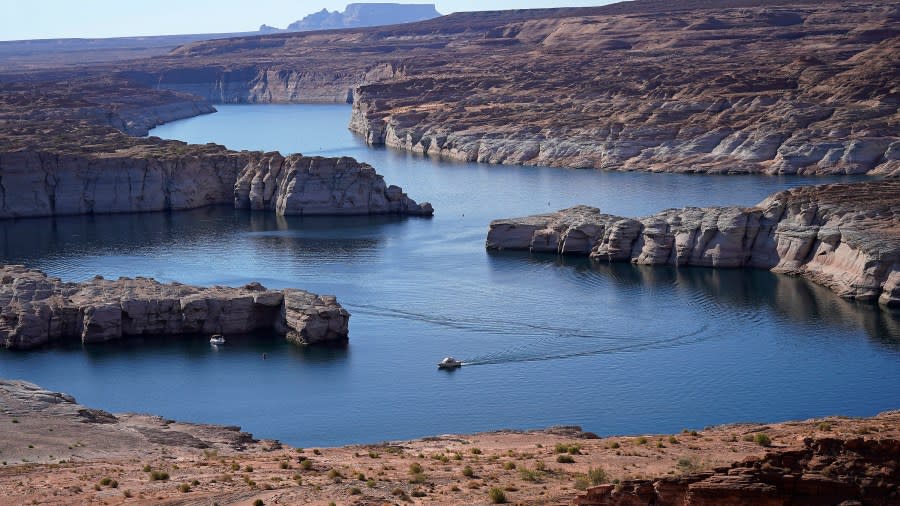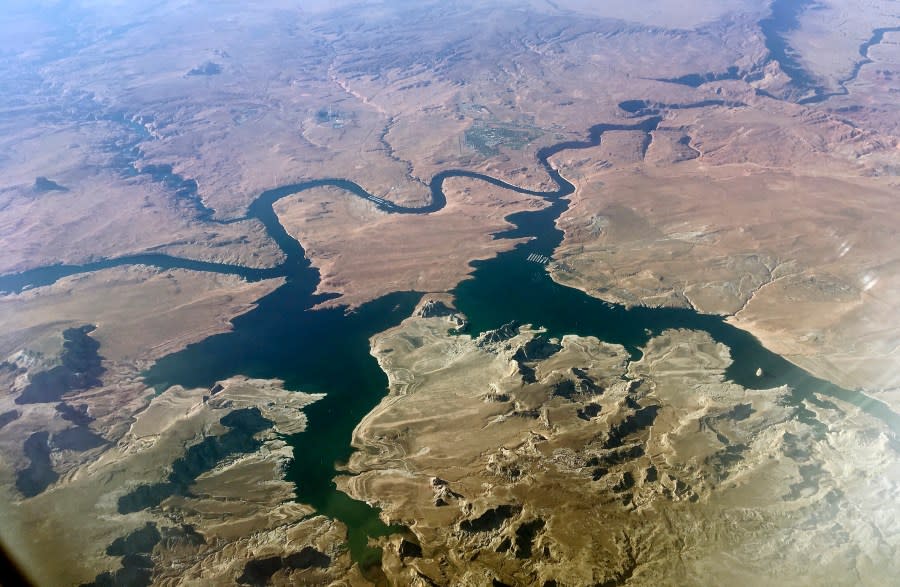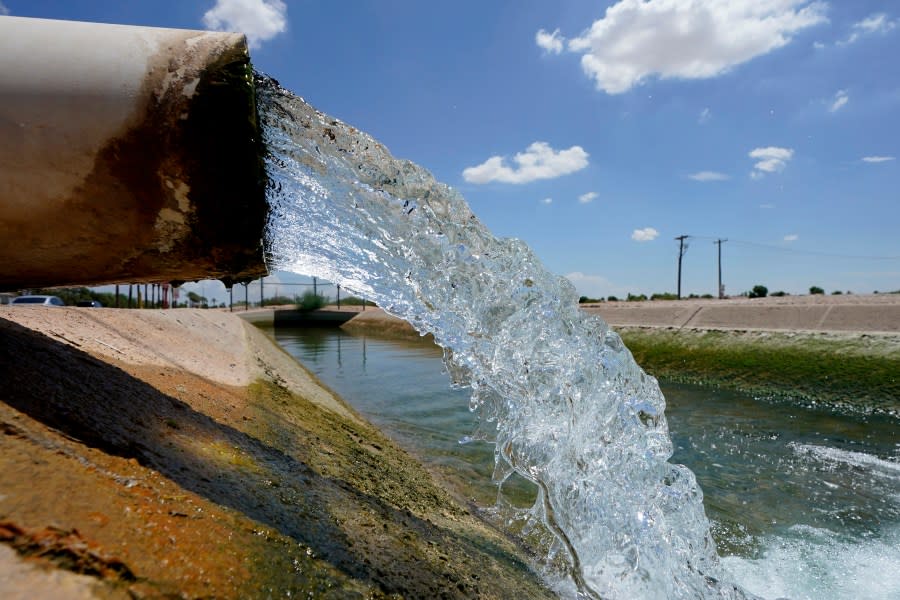Colorado River water debate: Tribes weigh in on future agreements

LAS VEGAS (KLAS) — “Please, from the bottom of my heart, prioritize tribal water rights and infrastructure,” Bridget Dorsey wrote.
Dorsey was asking the U.S. government to honor commitments to Native Americans as it puts together a plan to manage the Colorado River. Her simple request is among the 268 pages of messages that have been indexed and filed as part of the “Scoping Report for Post-2026 Colorado River Reservoir Operations.” It’s a 390-page document.
More than 15 tribes submitted comments that ranged from stern reminders of their right to govern themselves, reverence to nature and customs, and the need to be more involved in the decisions about the river.

Messages like Dorsey’s aren’t lost in the mountains of legalese and governmentspeak. Selfless personal pleas rise above the hundreds of other messages with more negative tones or piles of form letters meant to guide the U.S. Bureau of Reclamation’s decision on the river. Form letters accounted for nearly 90% of the 24,290 messages submitted during a 60-day comment period.
Timeline for Colorado River decisions released; millions already set aside for water projects
Tribes have been underrepresented in past Colorado River decisions — particularly the 2007 agreement that’s expiring in 2026. They don’t want it to happen again, and 16 tribal organizations are participating in the effort this time:
Colorado River Indian Tribes
Gila River Indian Community
Havasupai Tribe
Hopi Tribe
Hualapai Indian Tribe
Jicarilla Apache Nation
Navajo Nation
Paiute Indian Tribe of Utah
Pascua Yaqui Tribe
Quechan Indian Tribe
San Luis Rey Indian Wather Authority
Southern Ute Indian Tribe
Tohono O’odham Nation
Ute Mountain Ute Tribe
Ute Indian Tribe
Yavapai-Apache nation
“As indigenous people, we recognize the inextricable connection to the land and water, which brings a profound sense of balance and responsibility,” wrote Edward Velarde of the Jicarilla Apache Nation.
“We eagerly anticipate working collaboratively in the months and years ahead to protect the Colorado River system, honor the ancestral ties, and uphold the rights and well-being of the people, plants, and species that depend on the Colorado River,” he wrote.
“Acknowledging the historical exclusion of tribes from river management decisions, we emphasize the paramount importance of forging a partnership built on mutual respect, active engagement, and a genuine understanding of the indigenous perspective. By embracing this holistic approach, we can address the challenges at hand, develop sustainable solutions, and ensure the long-term vitality of the Colorado River for ourselves and for future generations to come,” Velarde wrote.
Here’s what 7 states say about solving the West’s water crisis
The federal government and organizations including the Southern Nevada Water Authority and the National Audubon Society echoed the need for closer involvement with tribes.

“There is a critical need for infrastructure to allow tribes to fully and efficiently use their water resources,” Velarde added. While many tribes have Colorado River water rights, many lack access to the water. Tribes need infrastructure in order to provide clean drinking water, adequate sanitation, clean energy and economic opportunities to their members. That means construction of pipelines, canals and reservoirs, as well as modernization of old water systems.
Tribes reminded the Bureau of Reclamation of its responsibility to ensure the water rights of the Basin Tribes are protected in the plans to manage the river. Many comments suggested that Reclamation consider subtracting tribal water allocations before determining future allocations or diversions.
A comment from several tribes including the Ute Mountain Ute Tribe suggested that water could be left in the system to improve river and reservoir supplies in exchange for economic compensation. But tribes want assurances that it’s tracked accurately.
An agreement reached this spring by the Gila River Indian Community might have laid the groundwork for other tribes to follow. The tribe will get up to $233 million to pay for water infrastructure that will bring 20,000 acre-feet of reclaimed water for agriculture. The deal includes $50 million payments to the tribe over the next three years to allow an extra 2 feet of water storage in Lake Mead.

Melvin Baker of the Southern Ute Indian Tribe argues that talk of development caps in the Southwest shouldn’t apply to tribes that haven’t even had the opportunity because of fights over water rights.
“This is a direct attack on tribal sovereignty. There are many tribes that need to provide clean piped drinking water to their tribal members; to develop agriculture to provide food for their tribal members; to develop their economies to provide jobs to their tribal members; and to use for many other purposes. Until tribes can benefit from their fully developed water resources in a manner that is equal to the rest of the Basin communities, the United States should not consider any suggestions for development caps,” Baker wrote.
Colorado River problems: Glen Canyon Dam, desalination and a city that could run dry
“Water is LIFE to the people of Hopi,” a message from Timothy Nuvangyaoma of the Hopi Tribe said. “The Grand Canyon River corridor is a place of paramount sanctimony and sacredness. It is the place of emergence and where Hopi return when they pass on. It is the place where we made our covenant to be stewards of the land, including the land encompassing the Grand Canyon. Being stewards is the most important core value of Hopi. Involvement in managing this precious resource allows us to be stewards on behalf of our ancestral lands and allows us to fulfill our sacred covenant.”

Tribal culture in the region has been connected to the river. A statement from the Colorado River Indian Tribes said, “The Mohave and Chemehuevi people have lived along the banks of the River in what is now the Lower Basin since time immemorial. Our Ancestors lived through droughts and floods while living and farming sustainably in this region for innumerable generations.”
When Lake Powell rose 65 feet this year on the strength of a wet winter, 30,000 acres along the shores and canyons of Lake Powell was submerged. Concern for archaeological sites that dried out and then were “redrowned” was included in comments from conservationists.
“The Glen Canyon landscape has cultural, social, and historical significance to multiple Colorado River Basin indigenous tribes, early Mormon settlers, and to many early explorers and river runners,” according to groups including the Glen Canyon Institute, the Great Basin Water Network, the Utah Rivers Council, the Returning Rapids Project and the National Parks Conservation Association.
“The future management of these resources should include a different approach than was used in the late 1950’s and early 1960’s when the Department of the Interior only focused on ‘recovery of artifacts.’ The Post-2026 Guidelines need to include active and consistent tribal input on the management of reservoir operations to protect all resources, not just the water.”
For the latest news, weather, sports, and streaming video, head to KLAS.

